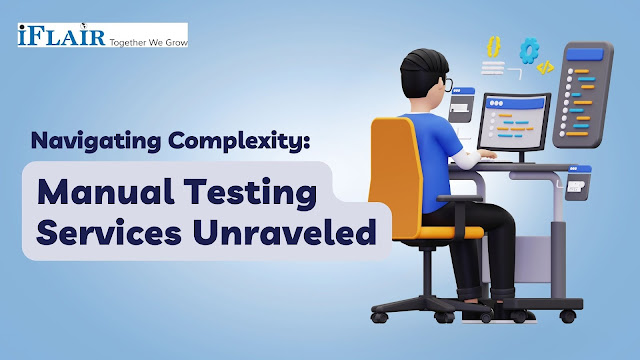Navigating Complexity: Unraveling Manual Testing Services
In the realm of software development, ensuring a seamless user experience demands rigorous testing. While automation has gained ground in recent years, manual testing services continue to be an indispensable part of the QA (Quality Assurance) process. Manual testing remains a crucial element in ensuring the reliability, functionality, and user-friendliness of software products. In this blog, we'll delve into the world of manual testing services, exploring its significance, nuances, and the solutions it offers in today's complex technological landscape.
Manual testing services encompass a meticulous process where human testers navigate through the software interface, assessing functionalities, identifying bugs, and ensuring the application’s usability. This process involves executing test cases, analyzing results, and offering valuable feedback. It acts as a crucial checkpoint to validate the software against various user scenarios, ensuring it meets the specified requirements and performs as intended.
The Importance of Manual QA Testing Services
Despite the rise of automation, manual QA testing services play an irreplaceable role in software development for several reasons:
Complex Scenarios Handling: Human intuition and cognitive abilities enable testers to identify intricate issues that automated tests might overlook. They can simulate diverse user scenarios, offering a comprehensive evaluation of the software's performance.
User-Centric Approach: Manual testing allows for an empathetic evaluation of the software from a user’s perspective, ensuring the interface is intuitive and functions seamlessly, thereby enhancing the overall user experience.
Early Bug Detection: Human testers can intuitively identify anomalies, potentially catching issues at an early stage before they escalate, thus reducing the cost and effort required for rectification.
Exploring Manual Software Testing
Manual software testing involves a range of techniques and methodologies to ensure thorough testing of software products:
Exploratory Testing: Testers, equipped with domain knowledge and intuition, explore the software to uncover unforeseen issues and vulnerabilities, making it an invaluable technique for complex systems.
Usability Testing: This approach focuses on user-friendliness, ensuring that the software meets the needs of the end-users in terms of design, navigation, and overall experience.
Ad-hoc Testing: Testers conduct unplanned testing to identify issues that might not be covered by predefined test cases, simulating real-world scenarios.
Solutions Offered by Manual QA Testing
In the rapidly evolving tech landscape, manual QA testing solutions adapt to meet the challenges:
Collaborative Testing: Leveraging collaborative tools and platforms, testers can work efficiently across geographies, ensuring comprehensive testing and quicker issue resolution.
Integration with Automation: While automation streamlines repetitive tasks, integrating it with manual testing services optimizes the process by combining human intuition with the efficiency of automation, thereby enhancing overall testing coverage.
Agile Methodologies: Embracing agile methodologies ensures that manual testing aligns with the iterative nature of software development, allowing for faster feedback loops and continuous improvements.
The Future of Manual QA Testing Services
As technology advances, the landscape of manual QA testing continues to evolve. With the integration of AI and machine learning, manual testers are equipped with tools that facilitate smarter testing, enabling them to focus on complex scenarios while automation handles repetitive tasks.
However, the human touch in testing remains invaluable. The ability to adapt, think creatively, and empathize with end-users are elements that can't be replaced by automation alone.
In conclusion, manual testing services stand as a pillar in the software development lifecycle, offering a holistic evaluation that complements automated testing. Its ability to navigate complexity, handle diverse scenarios, and prioritize user experience makes it an indispensable part of ensuring software quality in an ever-evolving technological landscape. As technology advances, the synergy between human intellect and automated capabilities will further enhance the efficiency and effectiveness of manual QA services.
In the pursuit of flawless software, the human touch remains an irreplaceable asset.




Comments
Post a Comment